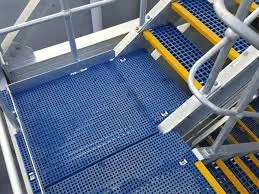
-
 Afrikaans
Afrikaans -
 Albanian
Albanian -
 Amharic
Amharic -
 Arabic
Arabic -
 Armenian
Armenian -
 Azerbaijani
Azerbaijani -
 Basque
Basque -
 Belarusian
Belarusian -
 Bengali
Bengali -
 Bosnian
Bosnian -
 Bulgarian
Bulgarian -
 Catalan
Catalan -
 Cebuano
Cebuano -
 China
China -
 China (Taiwan)
China (Taiwan) -
 Corsican
Corsican -
 Croatian
Croatian -
 Czech
Czech -
 Danish
Danish -
 Dutch
Dutch -
 English
English -
 Esperanto
Esperanto -
 Estonian
Estonian -
 Finnish
Finnish -
 French
French -
 Frisian
Frisian -
 Galician
Galician -
 Georgian
Georgian -
 German
German -
 Greek
Greek -
 Gujarati
Gujarati -
 Haitian Creole
Haitian Creole -
 hausa
hausa -
 hawaiian
hawaiian -
 Hebrew
Hebrew -
 Hindi
Hindi -
 Miao
Miao -
 Hungarian
Hungarian -
 Icelandic
Icelandic -
 igbo
igbo -
 Indonesian
Indonesian -
 irish
irish -
 Italian
Italian -
 Japanese
Japanese -
 Javanese
Javanese -
 Kannada
Kannada -
 kazakh
kazakh -
 Khmer
Khmer -
 Rwandese
Rwandese -
 Korean
Korean -
 Kurdish
Kurdish -
 Kyrgyz
Kyrgyz -
 Lao
Lao -
 Latin
Latin -
 Latvian
Latvian -
 Lithuanian
Lithuanian -
 Luxembourgish
Luxembourgish -
 Macedonian
Macedonian -
 Malgashi
Malgashi -
 Malay
Malay -
 Malayalam
Malayalam -
 Maltese
Maltese -
 Maori
Maori -
 Marathi
Marathi -
 Mongolian
Mongolian -
 Myanmar
Myanmar -
 Nepali
Nepali -
 Norwegian
Norwegian -
 Norwegian
Norwegian -
 Occitan
Occitan -
 Pashto
Pashto -
 Persian
Persian -
 Polish
Polish -
 Portuguese
Portuguese -
 Punjabi
Punjabi -
 Romanian
Romanian -
 Russian
Russian -
 Samoan
Samoan -
 Scottish Gaelic
Scottish Gaelic -
 Serbian
Serbian -
 Sesotho
Sesotho -
 Shona
Shona -
 Sindhi
Sindhi -
 Sinhala
Sinhala -
 Slovak
Slovak -
 Slovenian
Slovenian -
 Somali
Somali -
 Spanish
Spanish -
 Sundanese
Sundanese -
 Swahili
Swahili -
 Swedish
Swedish -
 Tagalog
Tagalog -
 Tajik
Tajik -
 Tamil
Tamil -
 Tatar
Tatar -
 Telugu
Telugu -
 Thai
Thai -
 Turkish
Turkish -
 Turkmen
Turkmen -
 Ukrainian
Ukrainian -
 Urdu
Urdu -
 Uighur
Uighur -
 Uzbek
Uzbek -
 Vietnamese
Vietnamese -
 Welsh
Welsh -
 Bantu
Bantu -
 Yiddish
Yiddish -
 Yoruba
Yoruba -
 Zulu
Zulu
Transport Solutions for GRP Tanks and Their Applications in Various Industries
Understanding GRP Transport Tanks Key Features and Benefits
In today’s industrial landscape, the safe and efficient transport of liquids is paramount. One of the most innovative solutions to this challenge is the Glass Reinforced Plastic (GRP) transport tank. Known for their durability and resistance to a range of environmental factors, GRP tanks have become a critical component in various sectors including water treatment, chemicals, and oil & gas.
What Are GRP Transport Tanks?
GRP transport tanks are storage solutions constructed from a composite material — a combination of glass fibers and a polyester or epoxy resin. This unique material provides a blend of lightweight properties with exceptional strength, making them ideal for holding a wide array of liquids, from potable water to aggressive chemicals. GRP transports tanks are manufactured using advanced techniques such as filament winding or hand lay-up, which contribute to their high structural integrity.
Key Features of GRP Transport Tanks
1. Corrosion Resistance GRP tanks are inherently resistant to corrosion, making them suitable for transporting aggressive chemicals that would deteriorate traditional metal tanks. This feature not only prolongs the lifespan of the tank but also ensures the safety of the transported materials.
2. Lightweight Compared to their steel or concrete counterparts, GRP tanks are considerably lighter. This attribute allows for easier handling, transportation, and installation. Less weight also means lower shipping costs, an important advantage for businesses that require mobility in their operations.
3. Thermal Insulation GRP tanks provide excellent thermal insulation, which is critical when transporting temperature-sensitive liquids. Maintaining the desired temperature can be essential to preserving the properties of certain chemicals or food products during transit.
grp transport tank

4. Customizable Designs GRP tanks can be tailored to meet specific industry needs. They can be produced in various shapes, sizes, and colors, allowing operators to optimize their transport and storage solutions according to their operational requirements.
5. Low Maintenance The non-corrosive properties of GRP tanks mean that they require minimal maintenance compared to traditional metal tanks. This not only saves on maintenance costs but also reduces downtime, allowing businesses to operate more efficiently.
Applications of GRP Transport Tanks
GRP transport tanks are employed across various industries. In the water treatment sector, they are used for the storage and transportation of drinking water and wastewater. In the chemical industry, they hold hazardous substances, from acids to solvents, safely. The oil and gas sector benefits from GRP tanks for transporting crude oil and fuel, minimizing the risks associated with leakage and spills.
Environmental Considerations
Using GRP tanks also aligns with sustainability efforts. Their longevity and durability mean fewer replacements and less waste. Additionally, they can be manufactured using recycled materials, further reducing their environmental footprint. As industries face increasing scrutiny regarding their environmental impact, GRP technology offers a viable solution that benefits both the business and the planet.
Conclusion
In conclusion, GRP transport tanks represent a significant advancement in storage technology, providing robust, lightweight, and versatile solutions to industries facing complex transport challenges. With their unique properties and adaptability, GRP tanks are well-suited to enhance operational efficiency while ensuring compliance with safety and environmental regulations. As industries continue to evolve, the role of GRP transport tanks will undoubtedly become even more critical in meeting the demands of modern logistics. Whether for water treatment, chemical transport, or oil and gas operations, GRP tanks stand out as a reliable choice for businesses looking to optimize their transport capabilities.









